Each team's greatest playing jerseys in World Cup history

The advent of a World Cup every four years not only captures the imaginations of rugby fans around the globe, but it also provides the globe’s rugby faithful with a chance to see a special new kit design for every one of the 20 nations involved.
The tournament allows teams to embrace and express their cultures and flaunt it on the biggest stage within the sport through the design of their playing jerseys, which are seen by the millions upon millions of spectators worldwide.
In an event which brings that much exposure, which is more often than not plenty more airtime than what most participating teams are used to, it makes these special World Cup jersey designs vital for unions looking to expand or establish their brands around the globe.
Consequently, fans have been treated to some spectacular jerseys over the years, with the eight previous World Cups giving teams ample chances to express and represent their country’s cultures through what they are wearing on the park.
With this year’s World Cup in Japan nearing kick-off, most teams have already released what they will be wearing in the Far East in two months’ time, with many designs catching the eye.
The same can be said since the debut World Cup tournament in 1987, which got us here at RugbyPass thinking as to which World Cup jersey has been the best for each side competing at this year’s edition of the global showpiece event.
So, here is a presentation of the best jerseys worn over the last 32 years of World Cup rugby by the 20 teams set to compete in Japan later this year.
Argentina
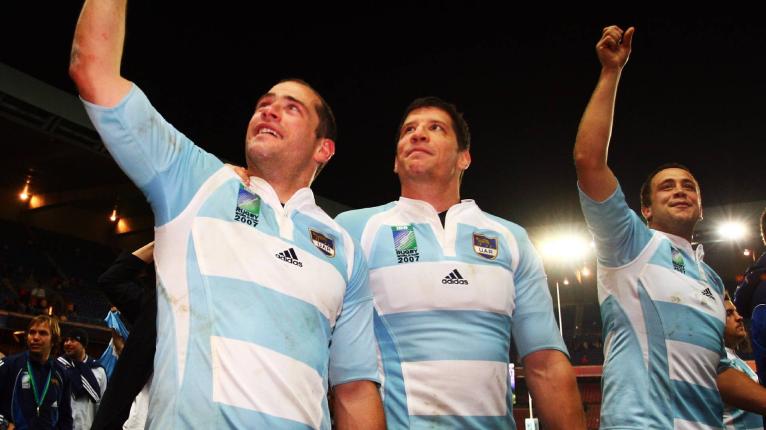
It’s hard to go wrong with the baby blue and white hoops for Los Pumas, but Adidas’ adaptation of the iconic jersey in 2007 was particularly striking as Argentina went on to stun the world by finishing in third place, toppling hosts France twice in the process and gaining recognition as a genuine powerhouse of world rugby.
Australia

This Reebok jersey, with the dark green sleeves and the Southern Cross over the World Cup logo on the chest, is symbolic of Australia’s period of dominance in the late 1990s and early 2000s, a time where they won the 1999 World Cup, and finish runners-up in 2003. That dominance is now a distant memory, and Wallabies fans can only reminisce on that golden era when this jersey instilled fear and intimidation into Australia’s opposition.
Canada
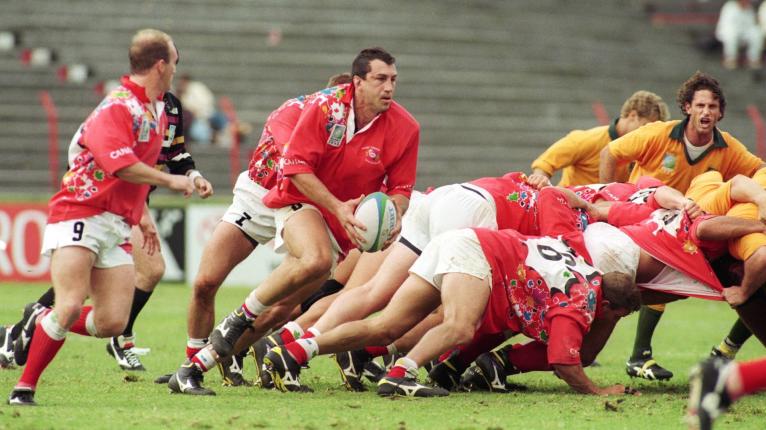
By far Canada’s most colourful World Cup jersey ever. Only the classic 1991 jersey, which they wore in their sole World Cup quarter-final appearance against the All Blacks, could challenge this rainbow-coloured maple leaf-laden jersey, but the flair of the 1995 jumper edges the simplistic yet effective kit from four years earlier.
England

As long as England are wearing white, then there should be no issues, but similarly to Australia, their 2003 jersey is representative of a time when they were on top of the world. The famous Jonny Wilkinson drop goal that sunk the Wallabies in the last minute of extra-time in that year’s final is the greatest moment in English rugby history, and so the Nike-manufactured all-white jersey with a red trim under the arm and down the rib cage that he wore should really be considered the best they’ve ever had.
Fiji
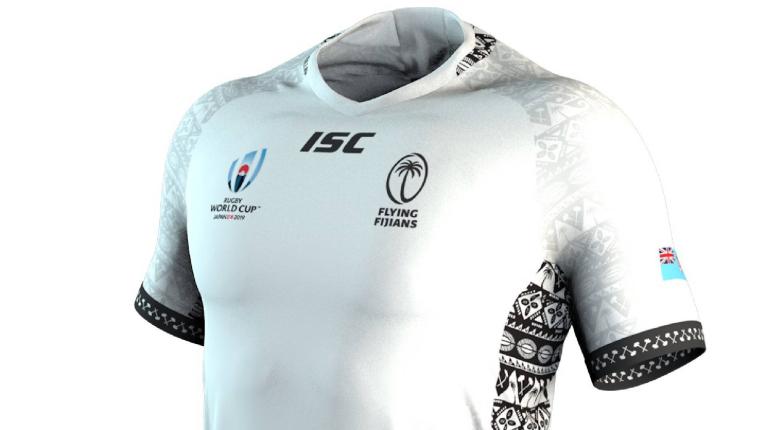
As time has gone on and the design and development of jerseys has evolved, the more appealing jerseys from Pacific nations have become. Fiji, for example, have implemented cultural designs on their white and black jerseys in recent World Cups, and ISC’s version of their 2019 World Cup jersey is a stunning one, with plenty of intricate patterns down the sides, across the shoulders and on the sleeves.
France
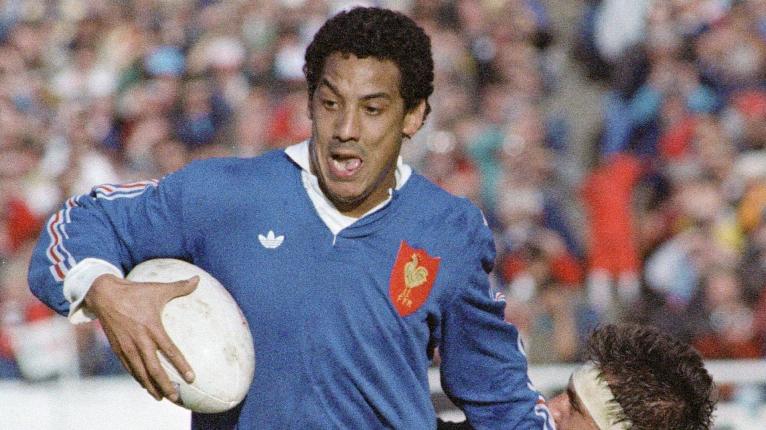
France’s jerseys for both this year’s World Cup and the 2015 tournament both had potential to take the cake, but Adidas’ take on their 1987 kit is a classic that is difficult to go past. With red, white and blue stripes lining the long sleeves, an enlarged, old-school French rugby logo on one side of the chest, and the classic Adidas logo on the other side, it makes for an iconic Les Bleus jumper.
Georgia
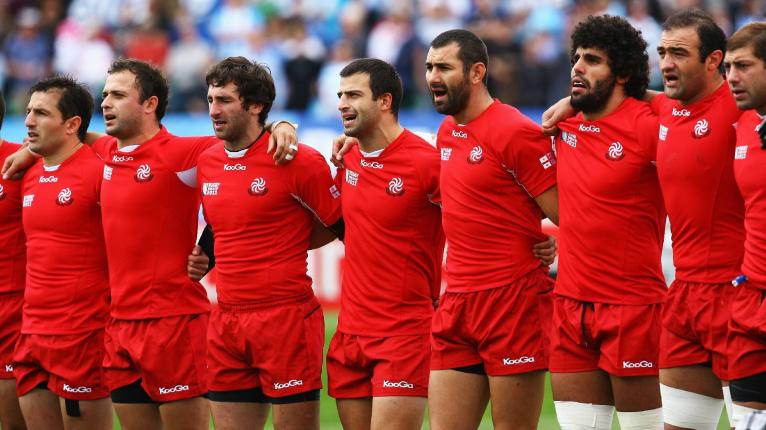
A drastic change in kit colours came after their debut tournament in 2003 saw them don a hideous purple and black combination, but Georgia have vastly improved their kit designs since then. With a red and white colour scheme to work with now, their 2011 KooGa jerseys are probably the pick of the bunch, due to how simple but sleek it looked.
Ireland
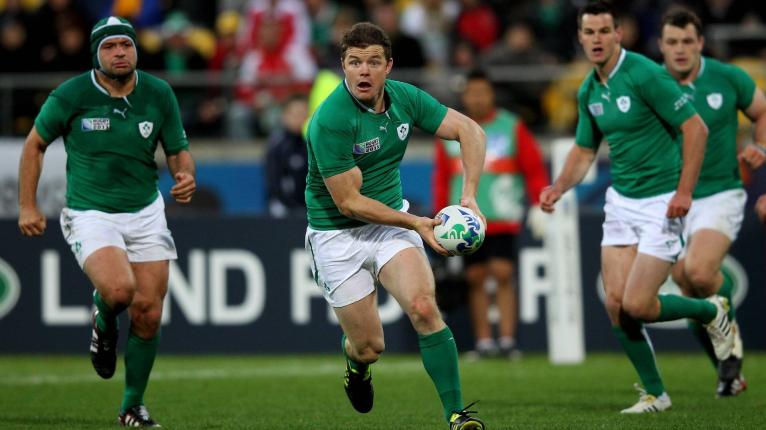
After going through all of Ireland’s World Cup kits since 1987, there was barely much change at all until the 2007 tournament, with green being the primary colour with a hint of white to accompany a big pop-up collar. Although the colour scheme has remained exactly the same, the way of which it has been used has been altered slightly over the past decade or so, and their 2011 Puma jerseys are probably the best example of that.
Italy
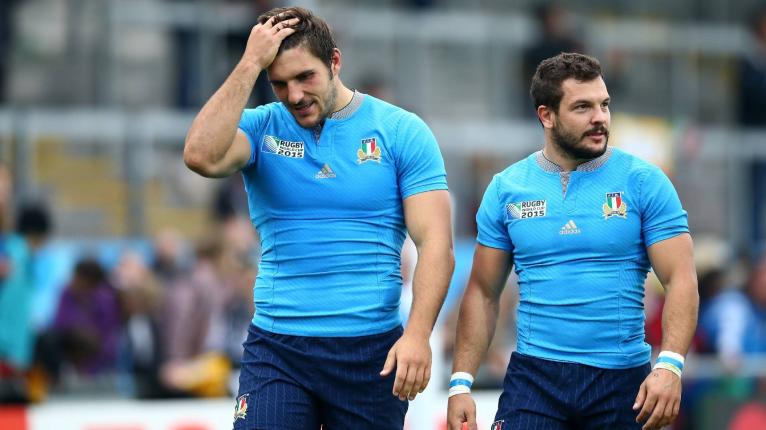
There hadn’t been a whole lot to rave about Italy’s World Cup kits until Adidas unleashed a beautiful design for their 2015 campaign. Sticking with their traditional sky blue jumpers, Adidas added slender diagonal stripes with a grey collar, while their navy blue shorts complemented the top half of their kit nicely.
Japan
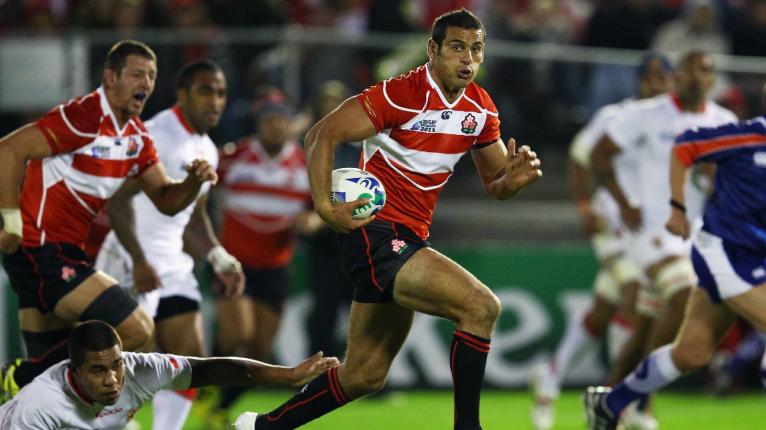
Like Argentina, it’s difficult to go wrong with Japan’s standard red and white hoops, although Canterbury haven’t done the best of jobs with a bizarre kit for their home tournament this year. The same can’t be said for their 2011 jerseys, with the number of white hoops restricted to just two across the torso. The rest of the jersey was predominantly red, aside from a few white lines encompassing the shoulders and under the hoops, and a white trip under the armpits.
Namibia

After a few horrid kits that were evident throughout the 2003 and 2007 World Cups, Namibia arrived at the 2011 tournament with a far better all-blue design provided by Puma. The change in appearance didn’t help the African minnows though, as they are still on the search for their first-ever win at a World Cup.
New Zealand
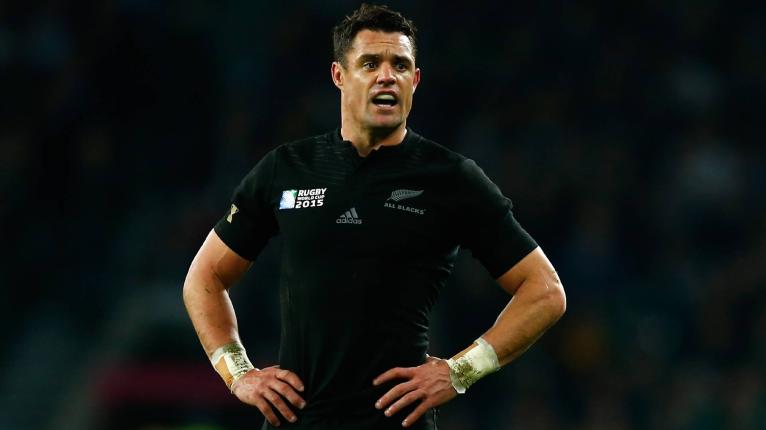
Given their name, as long as the All Blacks’ jersey is mainly black, then everything is in order for the Kiwis. However, Adidas went a step further in 2015, creating the ‘blackest jersey ever’ by shading in the normally-white All Blacks and Adidas logos on the chest, giving the New Zealanders a clean, crisp look. The 2019 jersey could have also challenged for this title had the collar made it not look like a t-shirt.
Russia

It’s slim pickings for Russia, who have only appeared at one other World Cup aside from this upcoming one in Japan. Their last outing on the global stage was eight years ago in New Zealand, when they sported an all-red look by Canterbury, with a white trim across the torso, down the sides and around the back of the neck.
Samoa

This is breaking the rules slightly as the jersey pictured above was Samoa’s away jersey for the 2015 tournament. However, it is by far the most eye-catching and wonderfully designed jersey they have ever worn at a World Cup, with the Pasifika designs on the sleeves and at the front of the jersey going a long way to making it one of BLK’s more memorable jumpers.
Scotland
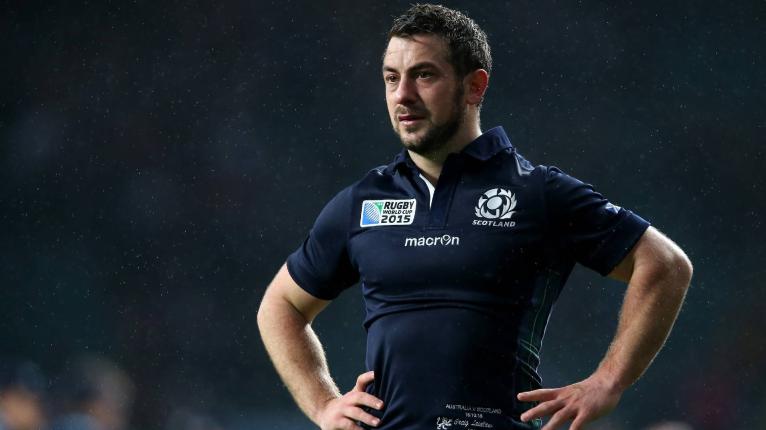
Apart from their 2007 and 2011 home jerseys and 1999 away jersey, Scotland have produced many aesthetic navy blue jerseys, and none have been better to look at than what they wore in 2015. Macron took an old-school approach by bring back the pop-up collar, and the tartan down the sides was a classy edition. The 2003 kit was also a nice take on a classic design.
South Africa

The Springboks have had a difficult time emulating the fabulous jerseys produced for World Cups in the mid to late 1990s, with the kit worn in their debut home tournament in 1995 by far the best that has ever been worn by the South Africans. The old Springboks logo was accompanied by a gold pop-up collar, giving Francois Pienaar an iconic look as he famously received the Webb Ellis Cup from Nelson Mandela at Ellis Park for South Africa’s first-ever title.
Tonga
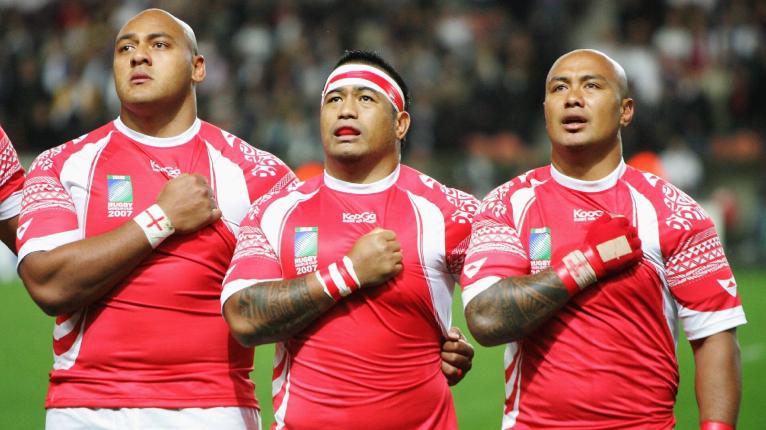
Like Fiji and Samoa, the evolution of jersey designs has seen the incorporation of cultural patterns become a significant feature on Tonga’s playing kit in the modern era, and that was best done by KooGa at the 2007 tournament. Both sleeves were heavily engulfed with traditional Tongan designs, giving them a distinct look as they pushed England and South Africa to the limit in France.
United States
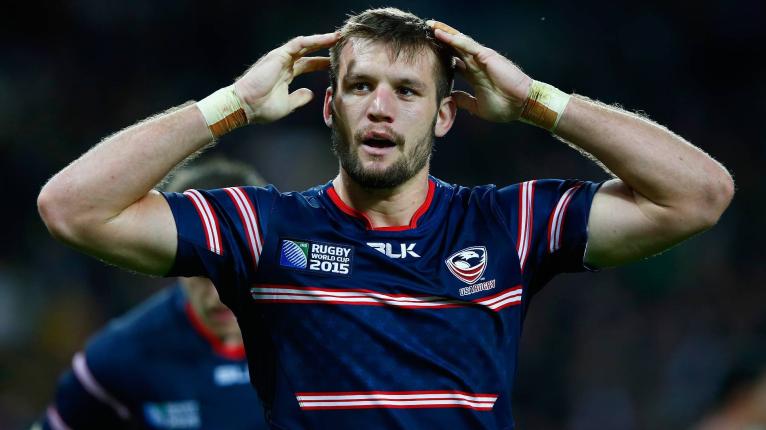
BLK mixed things up a lot for the USA at the 2015 tournament, as the Eagles had previously played in either white or red kits at World Cups. However, they wore a dark blue strip with thin red and white strips across the torso and along the sleeves, which contrasted well to give them their most compelling jersey to date.
Uruguay

Uruguay have only played in three World Cups, but they sported a nice light blue jumper in their second appearance at the 2003 tournament. A black trim around and underneath the shoulders and on the edge of their sleeves was subtle yet not underwhelming, which added value to their overall look.
Wales
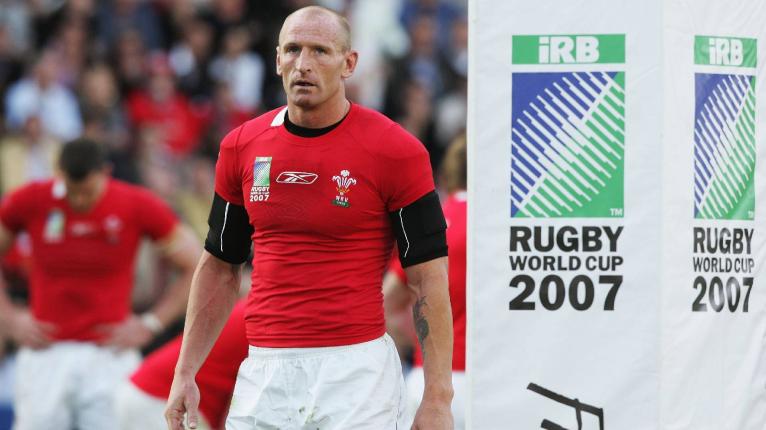
Although it was their worst showing at a World Cup of all-time, Wales’ all-red jersey with minimal white trip from 2007 was a reinvention of their famous jumper. The only white that featured was what appeared around the back of the neck, and although the players and coaches themselves underperformed in France, jersey manufacturer Reebok certainly stepped up to the plate.
In other news:










































Comments on RugbyPass
The shoulder is a “joint” with multiple bones. You don’t “fracture” a shoulder, you fracture any one or more of the bones that make up a shoulder.
2 Go to commentsOh dear, bones too suspect to continue?
2 Go to commentsBold headline considering the Canes and Blues are 1 and 2 and the Brumbies were soundly beaten by the Chiefs and Blues. Biggest surprise is Rebels 4 Crusaders 12 - no one saw that coming. If Aus are improving that’s great 👍
1 Go to commentsAnna, You are right, we need to have patience whilst the others catch up to England and France. Also it is the PWR that has been the game changer for England. the RFU put money into that initially at the expense of the Red Roses. I was sceptical at first but it has paid off in spades.
1 Go to commentsI think Matt Proctor became a 1 test AB in the same fixture. Cameron is quality and has been great this season, can’t believe’s he only 27. Realistically how would he not be selected for ABs squad this year. Only Dmac is ahead of him as a specialist 10. With Jordan out, it will come down to where and when Beauden Barrett slots back in, and where they want to play Ruben Love. Cameron seems an absolute lock in for the wider squad though. Added benefit of TJ-Cameron-Jordie combination at 9, 10, 11 too.
1 Go to commentsFarcical, to what end would someone want to pay to keep this thing going.
1 Go to commentsHavili, our best 12 by a mile, will be in the squad, if he stays fit. JB is the most overrated AB in the last 50 years.
61 Go to commentsWe had during the week twilight footy, twilight cricket, tw golf plus there was the athletics club. Then the weekend was rugby 15s plus the net ball, really busy club scene back then but so much has changed and rugby has suffered. And it was all about changing lifestyles.
6 Go to commentsIn the 70s and 80s my club ran 5 Senior sides plus a Vets. Now it is 2 sides with an occasional 3rd team. Players have difficulty getting to training now, not sure why and the commitment is not there. It seems to me more a problem of people applying themselves and not expecting to turn up and play whenever they want to.
6 Go to commentsROG’s contract is until 2027. The conversation about a successor to Galthie after RWC 2027 may be starting now. We can infer that Galthie’s reign stops then. He is throwing the Irish Coaching Job angle in because he is Irish. The next Irish coach MUST be Leo Cullen. As well as being the best coach available, coaching the vast majority of Irish Internationals week in week out, he has shown incredible skill at recruiting the best coaching staff for the job in hand. That was a failing in France. Cullen is a shrewd guy and if there is a need for foreign coaches underneath him he won’t hesitate. Rightly so. Ireland does need to start to bring Irish coaches through. Not just at the professional level but we need to train coaches to man new pathways for developing kids from schools/clubs up through the divisions.
8 Go to commentsNo Islam says it must rule where it stands Thus it is to be deleted from this planet Earth
18 Go to commentsThis team probably does not beat the ABs sadly Not sure if BPA will be available given his signing for Force but has to enter consideration. Very strong possibility of getting schooled by the AB props. Advantage AB. Rodda/Skelton would be a tasty locking combination - would love to see how they get on. Advantage Wallabies. Backrow a risk of getting out hustled and outmuscled by ABs. Will be interesting to see if the Blues feast on the Reds this weekend the way they did the Brumbies we are in big trouble at the breakdown. Great energy, running and defence but goalkicking/general kicking/passing quality in the halves bothers me enormously. SA may have won the World Cup for a lot of the tournament without a recognised goalkicker but Pollard in the final made a difference IMO. Injuries and retirements leave AB stocks a bit lighter but still stronger. 12 and 13 ABs shade it (Barret > Paisami, Ione = Ikitau, arguably) Interesting clash of styles on the wings - Corey Toole running around Caleb Clark and Caleb running over the top of Toole. Reece vs Koro probably the reverse. Pretty even IMO. 15s Kelleway = Love See advantage to ABs man for man, but we are not obviously getting slaughtered anywhere which makes a nice change. Think talent wise we are pretty even and if our cohesion and teamwork is better than the ABs then its just about doable.
11 Go to commentsCompletely agree. More friday night games would be a hit. RFU to make sure every club has a floodlit pitch. Club opens again Saturday to welcome touch / tag. Minis and youths on Sunday
6 Go to comments1.97m and 105Kg? Proportionately, probably skinnier than me at 1.82 and 82kilos. He won’t survive against the big guys at that weight.
56 Go to commentsThe value he brought to the crusaders as an assistant was equal to what he got out of being there. He reflected not only on the team culture but also the credit he attributed to the rugby community. Such experience shouldn’t be overlooked.
8 Go to commentsGood luck Aussie
11 Go to commentssmith at 9 / mounga 10 / laumape 12 / fainganuku 14
61 Go to commentsBar the injuries, it’s pretty much their top team …
2 Go to commentsDon’t disagree with much of this but it appears you forgot Rodda and Beale, who started at the Force on the weekend.
11 Go to commentsExcept for the injured Zach Gallagher this would be Saders best forward pack for the season. Blackadder needs to stay at 7, for all of Christies tackling he is not dominant and offers very little else. McNicholfullback is maybe a good option, Fihaki not really upto it, there was a reason Burke played there last year. Maybe Havilli to 2nd five McLeod to wing. Need a strong winger on 1 side to compliment Reece
1 Go to comments